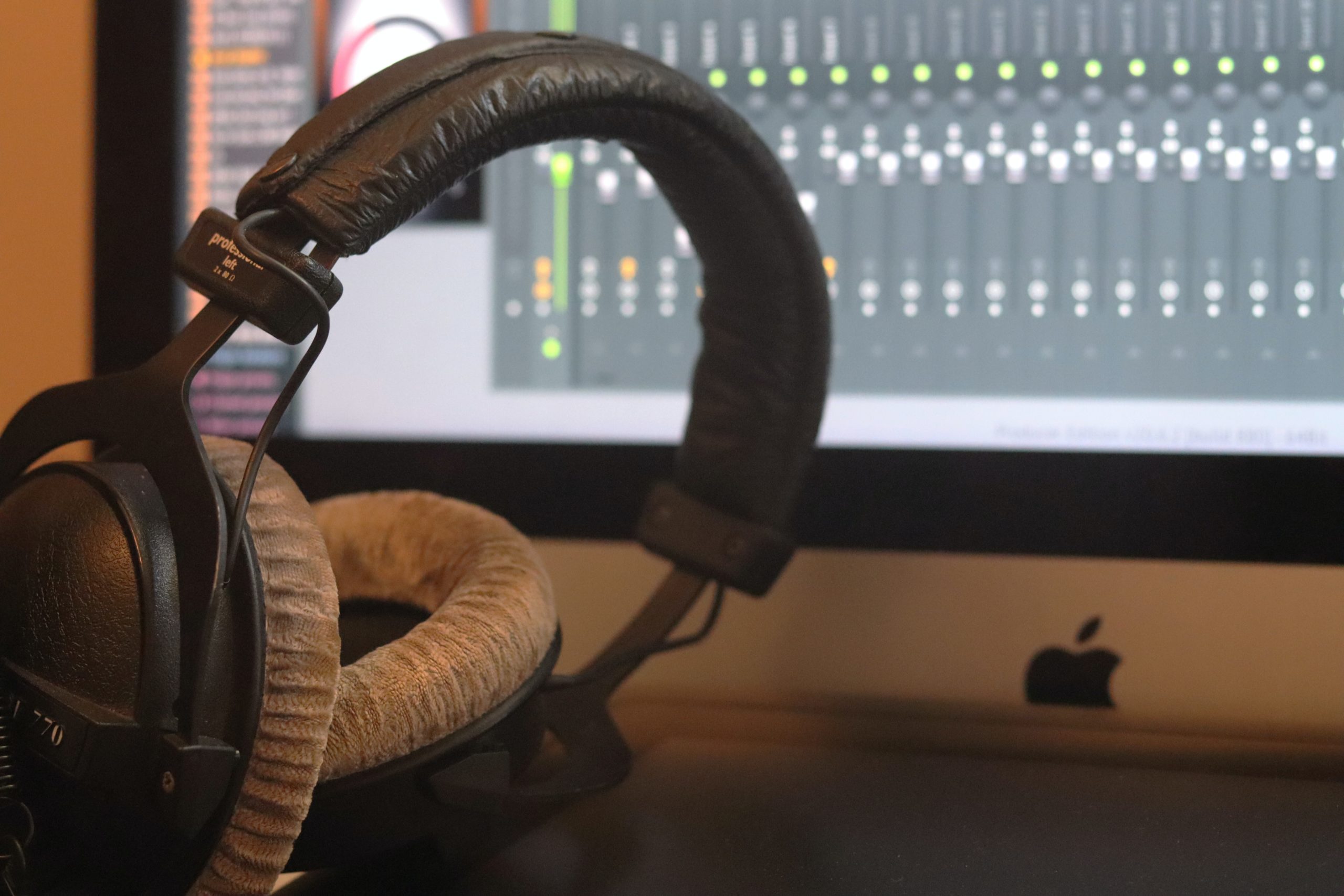If you’ve spent any time recording in your DAW, you are certainly aware by now how hard it can be to get things to actually sound good. As soon as you do a little Youtube search to get some help, you’ll find hours and hours of tutorials ranging from the very basic steps to master-level mixing. Where does one even start figuring it out?
I decided to write up my own basic mixing tips for anyone who knows how to record but just can’t seem to get things to sound good yet. These are easy, baby steps that work in any DAW. I hope it’s helpful!
Bring the level of every track down to at least -10db to -15db. Your Master Bus should remain at 0 dB. This is part of what is called “gain-staging” and it basically means that you need to always be conscious of not crowding the ceiling of your mix. If every track is at zero (the loudest) then you will only hear a crowded, jumbled, even distorted mess once all the tracks are there. What often happens is the first track that is recorded stays at zero. Let’s say that the first track is an acoustic guitar track. Now you’ve recorded a vocal. You want the vocal a little louder than the acoustic so you turn up the vocal 2db. Before you know it, you are running out of headroom fast. So, if you start out by bringing everything down at least -10 to -15 db, you’ll give yourself the headroom you need to turn things up or down as you build out the production.
Organize your tracks into folders. Categorize them into groups, such as; lead vocals, backing vocals, drums and percussion, electric guitars, pads, keys, etc. Staying organized will allow you to focus on the more technical aspects of mixing.
Create sub-mixes or buses. These should be grouped according to how you want them to be mixed. I usually have a submix for all lead vocals, and a few different categories of backing vocals (stacks, gang, texture, etc.) Drums and Percussion, Electric Guitars, Acoustic Guitars, Bass, etc. The sub-mixes should be instruments that belong together and you want to mix them as a group. I will mix electric guitars and acoustic guitars differently, for example. So even though they are both guitars, I will create a submix for each. I approach backing vocals the same way.
Try some basic panning. Panning is the “left to right” spacing of sounds in the stereo field (my own definition, probably not textbook!) Generally speaking, your lead vocal, snare drum and kick drum, and bass are all straight up the middle, in the center. Everything else is fair game! Play around with spacing individual tracks throughout the stereo spectrum. You’ll be amazed at the difference in sound you’ll get by doubling (not cloning or duplicating the track but recording a second pass) certain instruments and panning one hard left and the other hard right. Try this with electric and acoustic guitars as well as with backing vocals.
Don’t be afraid to use presets. In the mixing world, presets are frowned upon. Apparently, it’s only for noobs. If you are a noob, then use them! When you are learning how to mix, presets can be incredibly helpful as a starting point. They can also help your ears hear the difference between different settings. I still use presets as my starting point on a few things. I tweak from there until I dial it in. Eventually, your ear will be trained enough to dial in your own settings from scratch, if you want. But if the preset provides you with a great starting point, why not use it? You can also save your own presets, so once you do get comfortable dialing in your own EQ settings on a lead vocal, for example, you can save your settings as your own preset!
Use EQ instead of the volume knob/fader. If something is too loud or too soft, the volume knob may not be the solution. Try using eq and find a specific preset and see if it helps an instrument to pop out more or not stick out as much.
Use inserts for a reverb (make sure the plugin itself is completely wet) then dial up or down the insert level. You can do this on your buses as well which helps add cohesiveness to a group of instruments. It helps all of your instruments sound like they are living in the same space.
Focus on learning one mixing tool at a time. There is a lot to learn and it all takes time and practice. The fundamentals are EQ, compression, reverbs, saturation, and chorus. Each of these fundamentals has a string of other tools and techniques. De-Lessing vocals, parallel compression, side-chaining, and so on. It’s easy to get overwhelmed once you dive down even one of these fundamentals. Pick one at a time, take some courses, or find tutorials for that specific tool and move on once you feel confident.
Learning to mix is much like learning a new instrument. If you approach it like learning an instrument, then you understand and respect the amount of dedication it takes to improve. Start with these basics and I promise, you’ll start to gain confidence and your mixes will start to sound legit.
